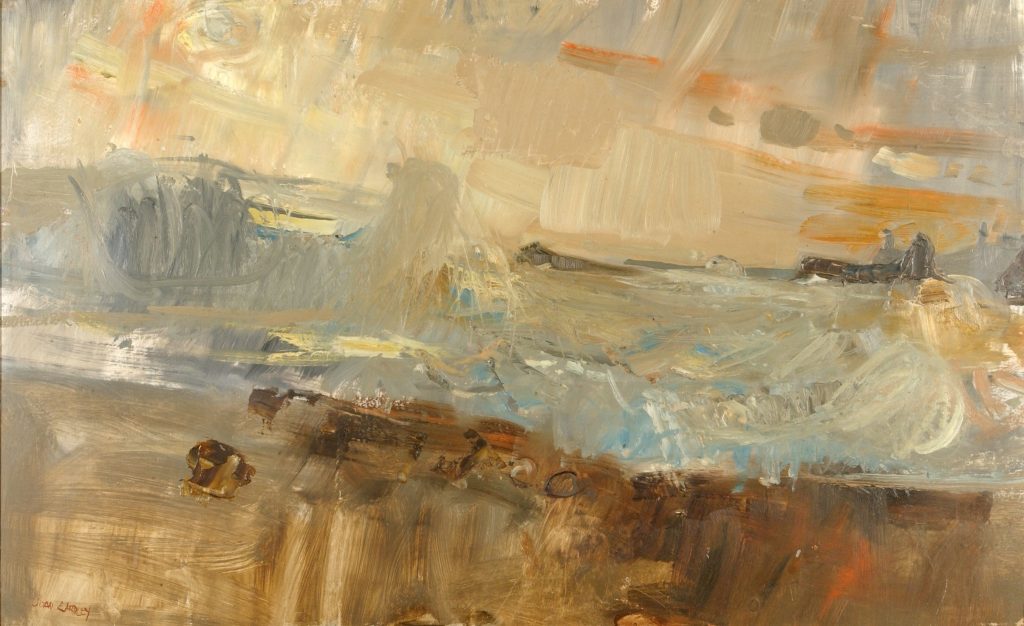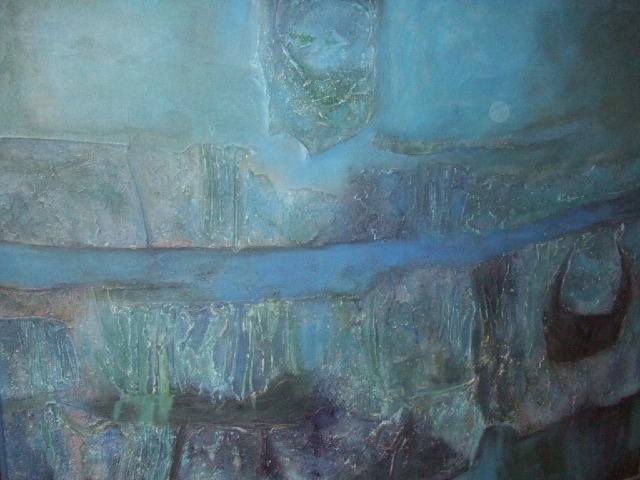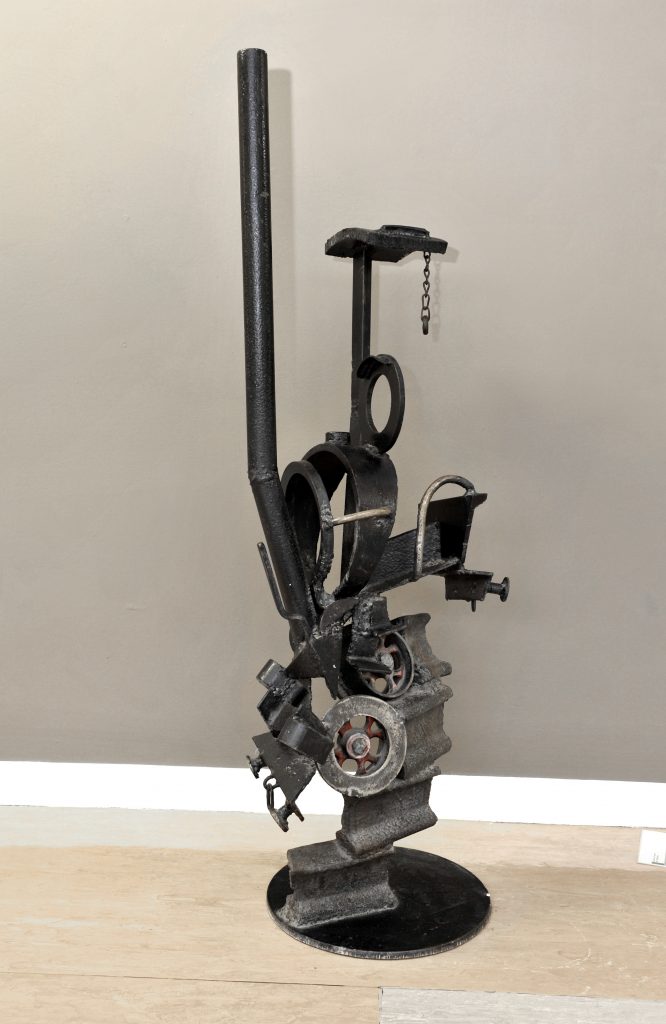Several artists in the University Art Collection would have been celebrating their 100th birthdays this year.
The work above is entitled ‘Blue on Blue’ (Polyvinylacetate on canvas, mid 1960s) and was painted by Alastair Michie (1921-2008) who was inspired to paint after seeing the work of the American abstract expressionists at the Venice Biennale in 1962. Michie was born in France to Scottish parents: his mother, Anne Redpath, was one of the greatest Scottish painters of the 20th Century and his youngest brother, David Michie, also became a celebrated painter.

This painting – ‘Wave Study II’ (Oil on board, 1958) by Joan Eardley (1921-1963) – was donated to the Art Collection as part of the Scottish Arts Council bequest in 1998. Eardley studied at Glasgow School of Art (1940-1943) and was deeply affected by the life and atmosphere of the slums of Glasgow. For her subject-matter she concentrated on street life, young children and the elderly, blending realism and compassion but without sentimentality. In 1951 she discovered the small fishing village of Catterline on the North East coast of Scotland, was captivated by the place and moved there, where she painted marine and landscape scenes in many different moods, sometimes incorporating real pieces of grass in the paint. Among some of her finest and most powerful works are fierce and bold evocations of the wind and the weather.
In 2021 a series of exhibitions and events will mark the centenary of Joan Eardley’s birth.
Click here for more details.
‘Stirling Castle’, a watercolour by Tom Shanks (1921-2020), was purchased for the collection in 2014. On leaving school, Tom Shanks became an apprentice carpet designer at Templetons carpet factory and first exhibited in the company art club. As his interest and skill developed, he applied to Glasgow School of Art to attend evening classes and was encouraged to enrol for the full time diploma course. After graduating in 1950, he worked as a mural painter, stage designer, designer in the Edinburgh Weavers Dovecot studios and as a teacher of art but he always continued to paint the Scottish landscape. He exhibited widely and his work is held in public and private collections worldwide.
George Wyllie MBE (1921-2012) worked as a post office engineer and customs officer before taking up art. Inspired by Italian metal sculpture, he took welding classes at the Royal Technical College and studied part-time at Glasgow School of Art. Exhibiting widely from the 1960s, he didn’t become a full time artist until 1979. He described himself as a ‘Scul?tor’, exhibited around the world, and was perhaps best known for his 1987 ‘The Straw Locomotive’ (suspended above the River Clyde by a crane then ceremonially burnt) and the award-winning ‘The Paper Boat’, which sailed down the Clyde, Sheldt and Hudson rivers.
This work ‘Locomotive descending a staircase’ (Bronze, 1973) was purchased for the collection in 1977, and apparently its title was inspired by Marcel Duchamp’s seminal 1912 painting ‘Nude descending a staircase No. 2’.
Click here to keep up with plans for George Wyllie’s centenary year.
This screenprint entitled ‘Intrusion’ is the work of Cecil King (1921-1986) and was purchased for the Art Collection in 1974 from the Compass Gallery. Cecil King was an Irish abstract-minimalist painter who was largely self-taught as an artist. He had his first one-man show in 1959, but worked in the printing industry and did not become a full-time artist until 1964. While he began painting in an expressionist manner, this piece is typical of his mature style which involved clean blocks of even colour cleaved at an acute angle. A print named Red Intrusion, a silkscreen print, won the gold medal at the fourth international Graphic Biennial in Germany in 1976.
And finally, a bicentenary.
There are very few works in the Art Collection from the Nineteenth Century. But in 1984 the Art Collection agreed to take this portrait, painted in 1867 by Norman Macbeth, born two hundred years ago this year. It is of Peter Drummond of Stirling, who was the founder of the Stirling Tract Enterprise which, until a few years ago, continued to publish and promote Christian thinking throughout Scotland. When the Enterprise stopped functioning, this portrait was gifted to the University by The Drummond Trust, as the archive is already held in the University Archive.




